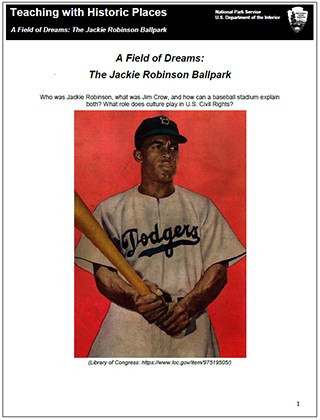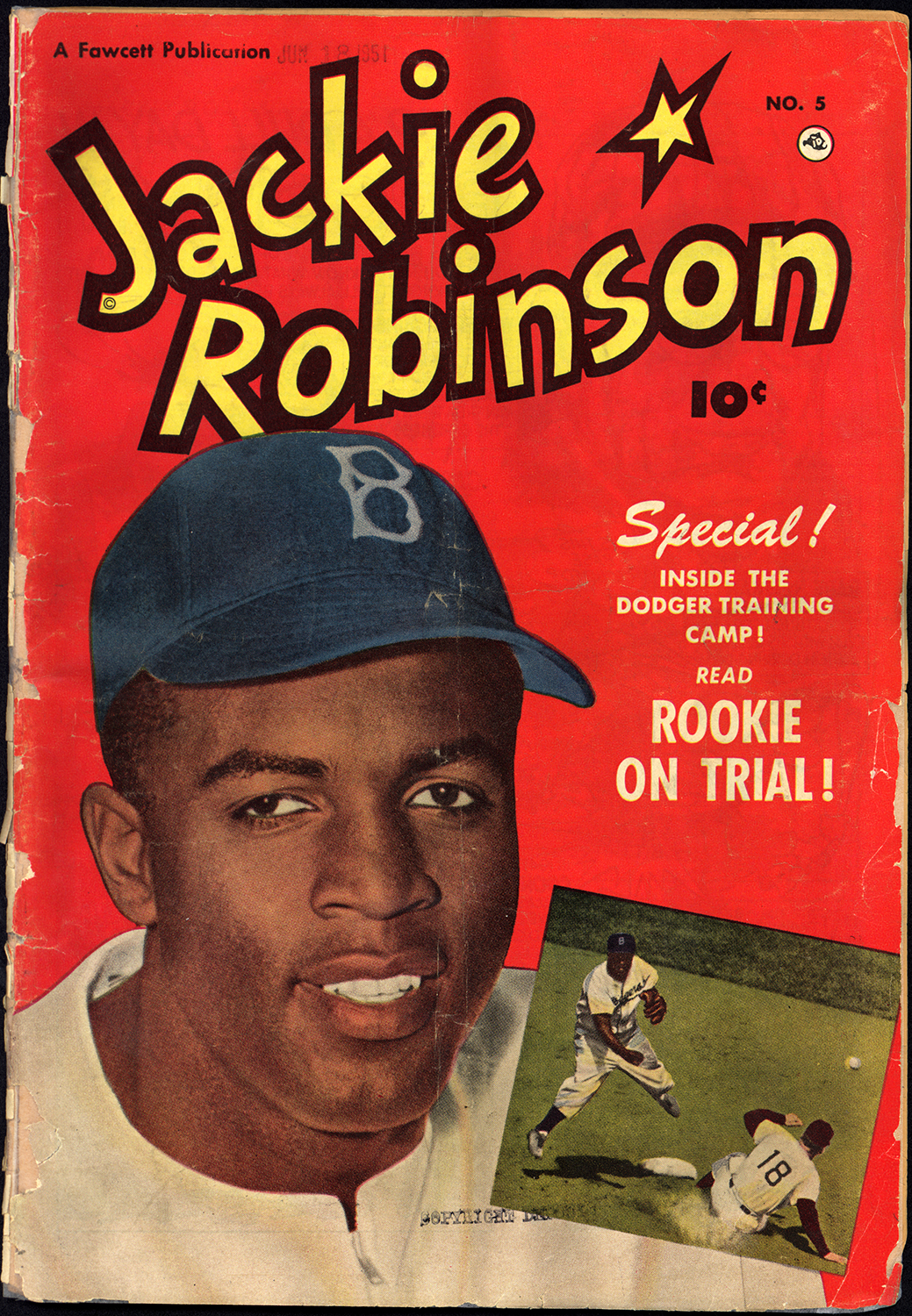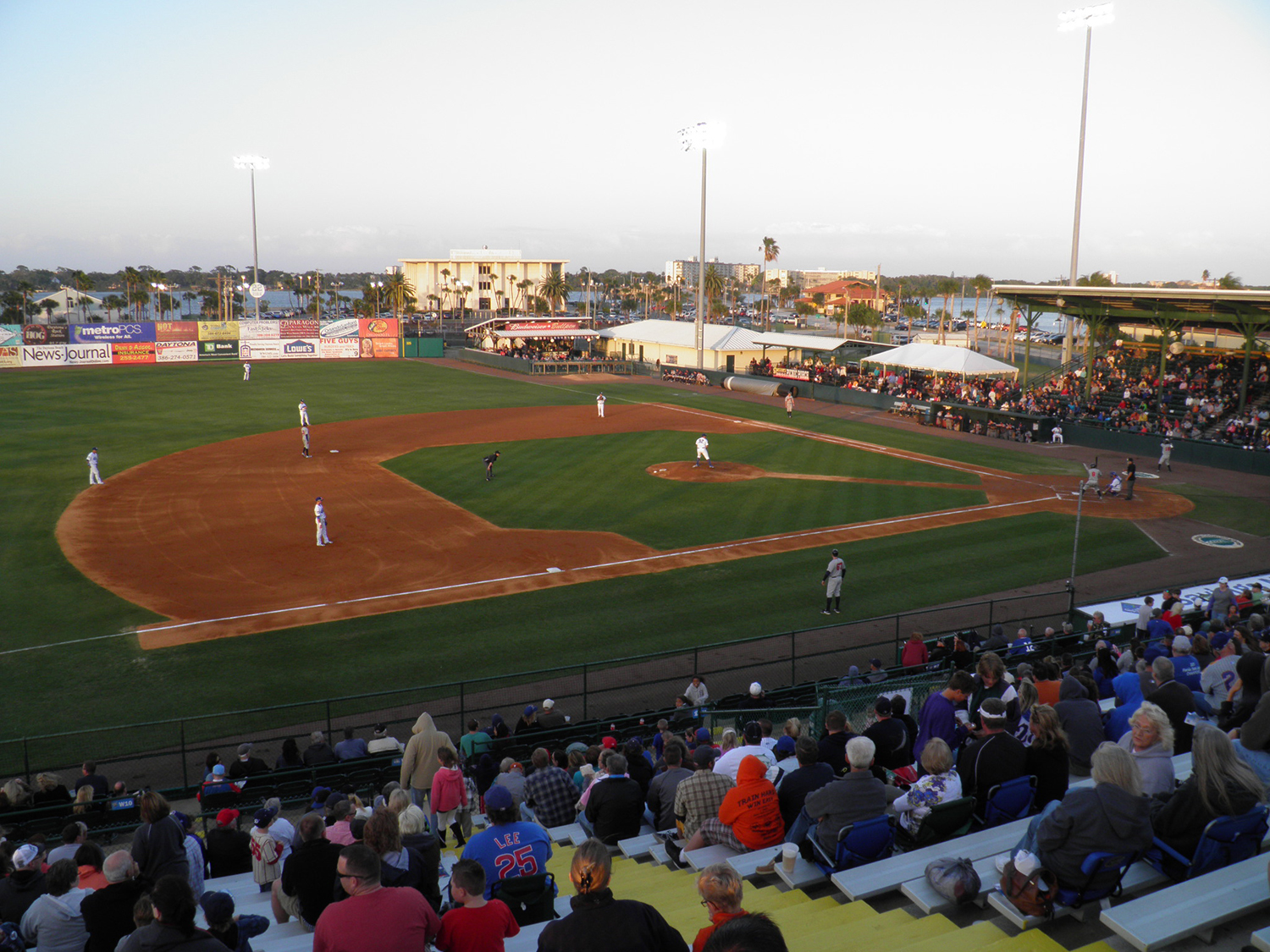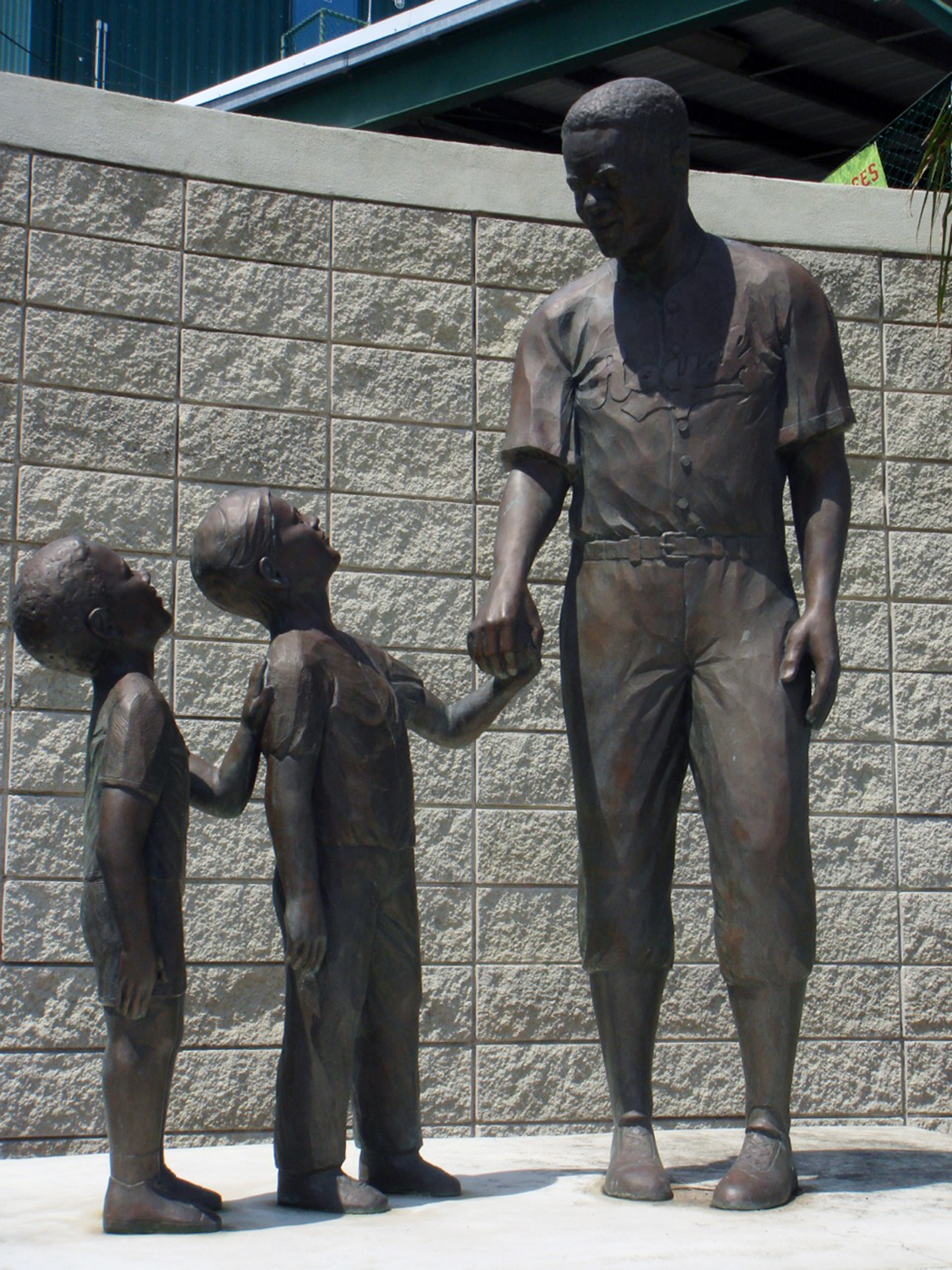
(Featured illustration courtesy Library of Congress)
Contents
| Introduction
| Where it Fits Into the Curriculum (Objectives and Standards)
| Materials in the Lesson (Readings, Maps, Visual Evidence)
| Post-Lesson Activities
| More Resources
| About
Who was Jackie Robinson, what was Jim Crow, and how can a baseball stadium explain both? What role does culture play in U.S. Civil Rights?
Daytona Beach’s City Island baseball stadium is a magical place. Not as large or new as other minor league parks, but on a steamy summer night, thousands revel in its cool ocean breeze, delight in twinkling marina lights, inhale the scent of ballpark hot dogs, and jump when crack! Bat meets ball.
Yet, what makes this historic field’s baseball diamond shine brighter than any other in the United States is its heritage: it was at this place that the dream of racial equality in baseball took a great leap toward reality.
On March 17, 1946, African American rookie hitter Jackie Robinson played at City Island’s ballpark on a mixed-race team against an all-white team. This was a first in professional baseball since the 1800s. There were thousands of spectators, including nearly a thousand African American fans seated in a segregated section. Robinson smashed a barrier for sports that day and was thrust into the nation’s consciousness as a symbol of Jim Crow’s demise.
Robinson went on to become Rookie of the Year in 1947 and a World Series player in 1955. He starred as himself in the dramatized version of his life, The Jackie Robinson Story (1950), played ball for 11 years, and became a Civil Rights era activist. He worked for that cause until his early death in 1972. In the 1990s, the ballpark was renamed in his honor and listed on the National Register of Historic Places.
Where it Fits into the Curriculum
This lesson can be used in U.S. history, social studies, and other curricula that examine African American history and civil rights in the United States following World War II.
Time Period: Mid-20th Century, Civil Rights Era
Objectives
2. To explain how and why segregation in Daytona Beach might be seen as less severe than in other parts of Florida;
3. To describe who Jackie Robinson was and what he accomplished;
4. To compare and contrast the treatment of Jackie Robinson in Dayton with other ballparks in segregated towns.
5. To plan and conduct a local history project related to African American history and/or Civil Rights.
National History and Social Studies Standards
This lesson relates to the UCLA National Center for History in the Schools National History Standards:
• Theme II: Time, Continuity, and Change
• Theme III: People, Places, and Environments
• Theme IV: Individual Development and Identity
• Theme V: Individuals, Groups, and Institutions
• Theme VI: Power, Authority, and Governance
• Theme X: Civic Ideals and Practices
See the Full Lesson (PDF) for details about how the these Standards and Themes relate to the lesson. Search our Lesson Plans by National History Standards or Lesson Plans by Social Studies Standards to identify lessons that correspond with the eras and themes you want to teach.
Materials Found in the Full Lesson
Accompanying Question Sets are paired with all materials in the Full Lesson (PDF).
• Getting Started: This image and short question is intended to jump-start students' "inner historian."
Image: Lobby Card Photo, Robinson and Rickey Interview (JPG, TIF)
• Locating the Site: Maps orient the students and encourage them to think about how place affects culture and society.
Map 1: Daytona, Florida, Automobile Blue Book Publishing Company, 1919 (JPG,TIF)
Map 2: Aerial Photographic Map, Daytona Beach, Florida, March 13, 1958 (JPG, TIF)
• Determining the Facts: Primary and secondary source readings for students.
Reading 1: Jackie Robinson, Branch Rickey, and the “Noble Experiment”.
Reading 2: Jim Crow and Jackie Robinson.
Reading 3: City Island Ballpark: A Field of Dreams.
Reading 4: Robinson’s Legacy, On and Off the Field.
| Photo 1: Aerial view of City Island Ballpark, circa 1930s. |
Illustration 1: “Lobby Card” Advertisement for the Movie, The Jackie Robinson Story, 1950. |
 |
 |
| Illustration 2: Front Cover of Jackie Robinson Comic Book, 1951. |
Photo 2: Daytona Cubs vs. Brevard County Manatees, at Jackie Robinson Ballpark in Daytona Beach, April 6, 2013. |
 |
 |
| Photo 3: Statue of Jackie Robinson at Jackie Robinson Ballpark, 2007. | |
 |
- Activity 1: Hold a Jackie Robinson Memorial Game
- Activity 2: Players for a Cause, in Your Community
- Activity 3: African American Heritage in Your State
This lesson is based on the National Register of Historic Places registration files for Jackie Robinson Ballpark, formerly known as Daytona City Island Ballpark, (with photos) and other sources. Jean West, an education consultant, wrote this lesson. It was edited by staff at the National Park Service Cultural Resources Office of Interpretation & Education. This lesson is one in a series that brings the important stories of historic places into classrooms across the country.
Last updated: September 26, 2024
